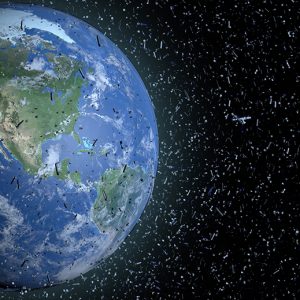We are committed to finding solutions to the Detritus Dilemma in Low Earth Orbit.
The growing amount of detritus in low Earth orbit is becoming an increasingly worrisome issue. From defunct satellites and spent rocket stages to tiny bits of shrapnel created by collisions, the amount of debris in orbit is increasing over time and could lead to collisions (creating even more space debris), posing a serious threat to space exploration in the future. It’s a major concern for those working in aerospace and space exploration.
Why is it a problem?
Detritus, or space debris objects, can range from a few millimetres to several meters in size and can travel at speeds of up to 28,000 kilometres per hour.
This accumulation of detritus in low Earth orbit poses a serious threat to both human and robotic space activities. Collisions with space debris can cause damage to satellites, space stations and spacecraft, leading to potential loss of communication, disruption of navigation and even catastrophic accidents. The risk of a collision increases with the number of objects in orbit, creating a cascading effect that could potentially generate even more debris.
The presence of detritus also affects the long-term sustainability of space activities, as it can limit future opportunities for space exploration and exploitation. The risk of collisions also hinders the development of space-based services, such as space tourism, remote sensing and communication.
Addressing the problem of space debris is critical to ensuring safe and sustainable space activities. Various solutions have been proposed – the challenge lies in selecting the most effective and feasible solution and implementing it in a timely manner.

